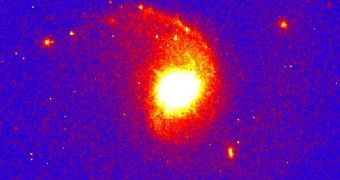The fine-structure constant of the Universe, known as alpha, may not be so constant throughout the Universe, experts proposed after an in-depth analysis of light emanating from quasars located far away.
Quasars (quasi-stellar radio sources) are the extremely distant and highly active cores of galaxies, which astrophysicists believe are powered by supermassive black holes. These structures may have formed when the Cosmos was only a fraction of its current age.
Analysis of the light they emit can provide clues on a variety of aspects astronomers are interested in, including the value of alpha. What the new study entails is that our corner of the Universe – where the Milky Way is located – may be fine-tuned for life.
If these readings are confirmed, then the discovery would have considerable implications for the way the hunt for extraterrestrial life is conducted. If the finding holds, then we may be searching for Earth-like extrasolar planets in vain.
What alpha measures is the coupling constant for the electromagnetic force. Variations as small as 4 percent of its value would render stars unable to produce essential elements such as carbon and oxygen.
Without these chemicals, the development of life would be impossible, as none of its known building blocks would exist. In the new study, alpha was found to be slightly smaller in the northern hemisphere and slightly larger in the southern hemisphere, Daily Galaxy reports.
The constant's spatial dependence was discovered by University of New South Wales physicist John Webb and his colleagues. In order to conduct the study, the team used the Hawaii-based Keck Telescope and the European Southern Observatory's (ESO) Very Large Telescope (VLT).
The Keck point to the northern hemisphere due to its location, while the VLT points to the southern hemisphere. The latter is located on Cerro Paranal, in Chile, South America. Quasars were selected as study targets because they can be seen throughout the sky.
This new proposition is currently being used in connection with several varying speed of light (VSL) theories, to explain the apparent flatness of the Universe, and other properties that cannot be accounted for under with the Big Bang alone.

 14 DAY TRIAL //
14 DAY TRIAL //